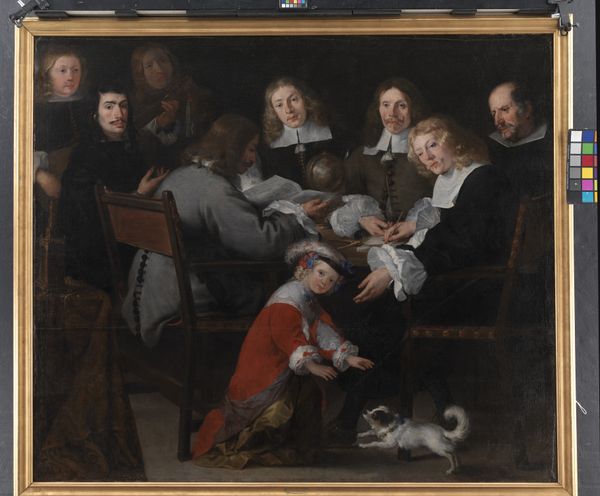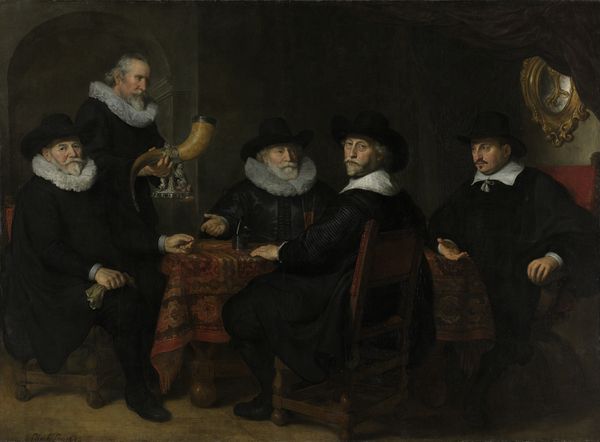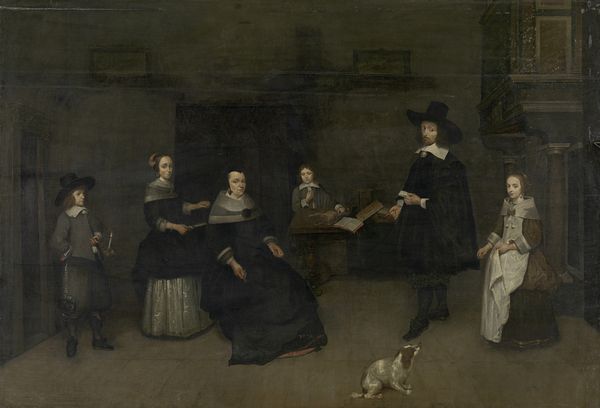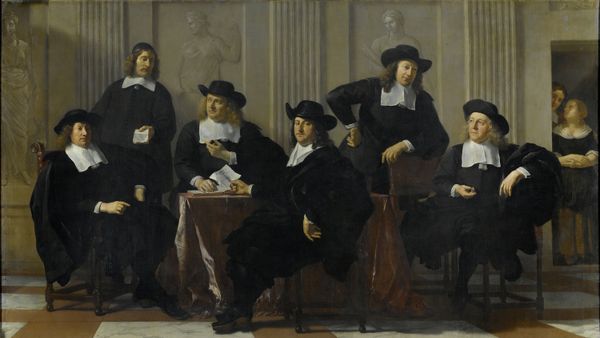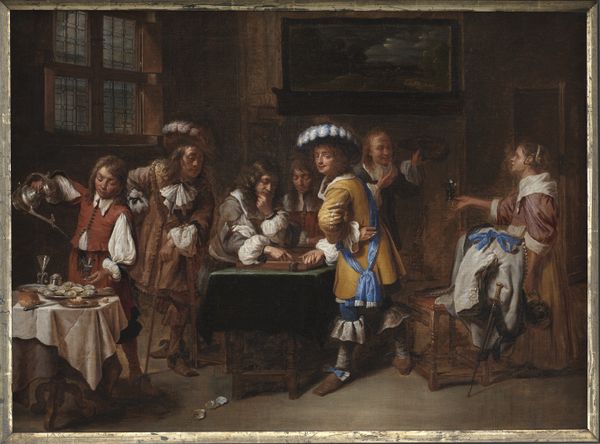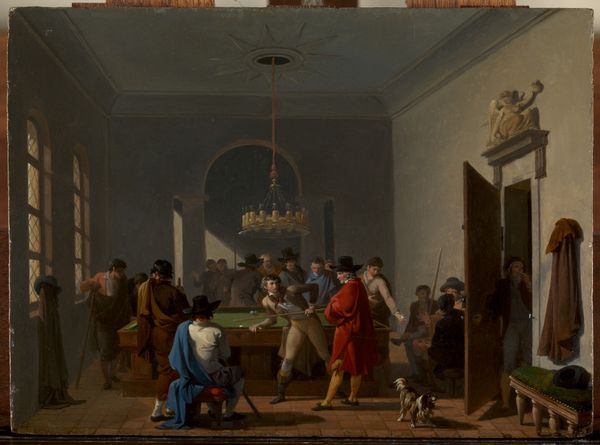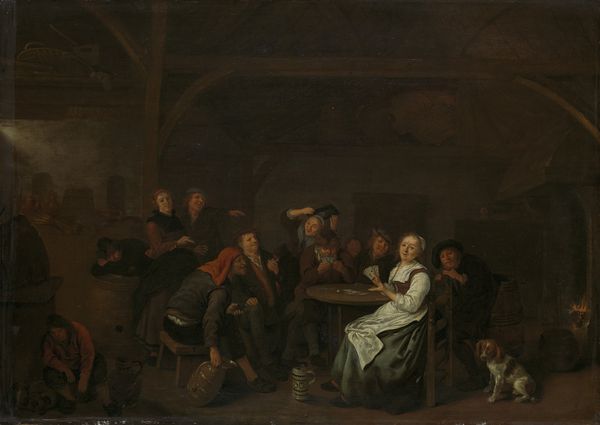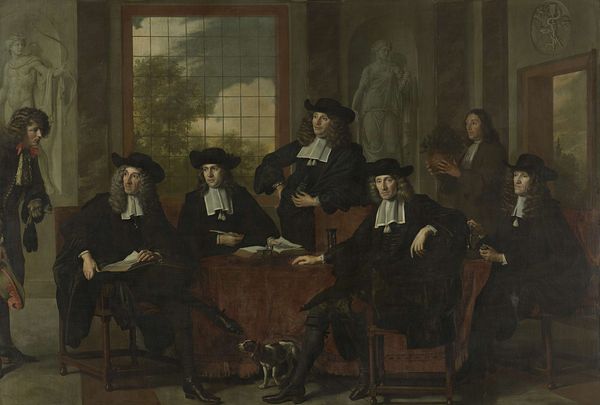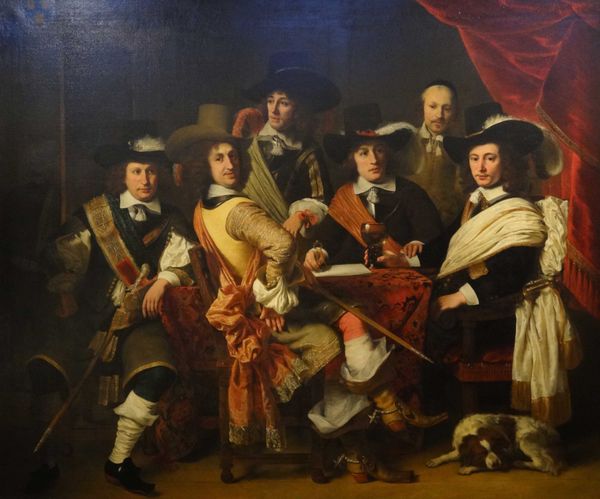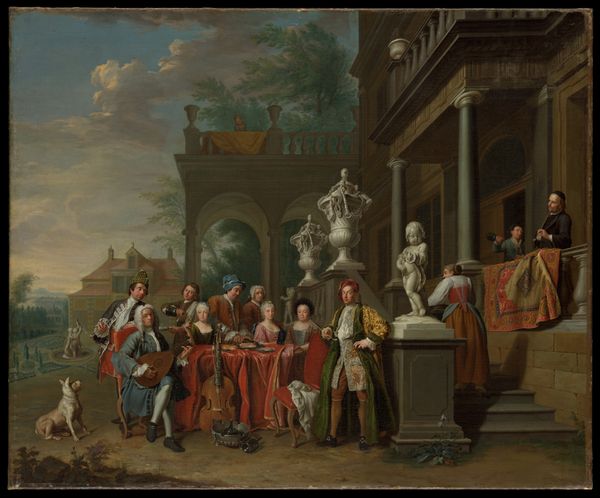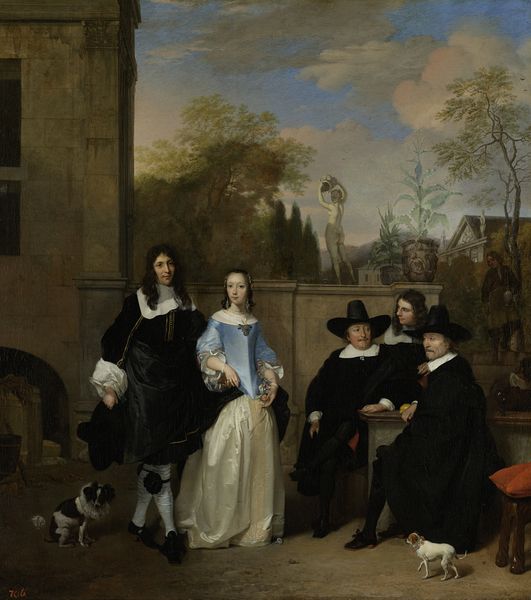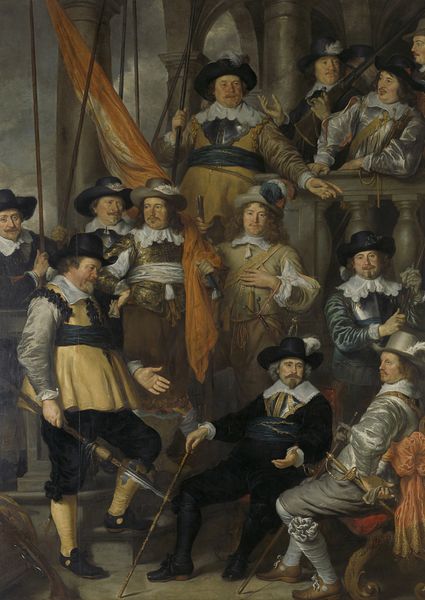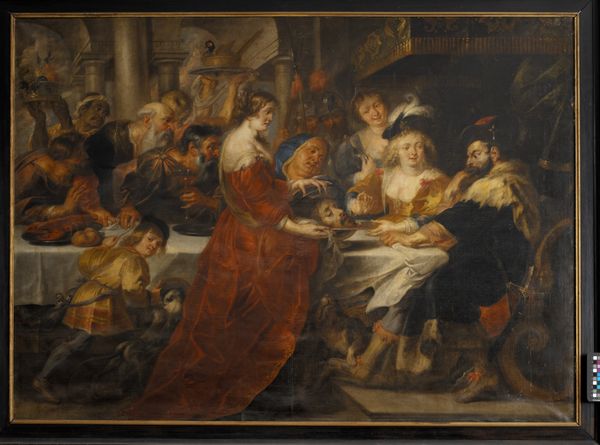
painting, oil-paint
#
portrait
#
dutch-golden-age
#
painting
#
oil-paint
#
group-portraits
#
genre-painting
Copyright: Public domain
Editor: We're looking at Jacob Ochtervelt's "The Regents of the Leprosy Asylum," painted in 1674. It's an oil painting depicting a group of men gathered around a table. The mood is quite somber and formal, and I'm struck by the contrast between the dark clothing of the men and the lighter background. What's your take on this piece? Curator: It's a fascinating look into the civic structures of the Dutch Golden Age. This wasn't simply a portrait; it was a statement about power and responsibility. Consider the figures: regents, the governing board of the leper house. Ochtervelt shows them conducting business. Do you notice the setting, though? How it elevates these men? Editor: I see it now, with the classical architectural details, like the columns and statue, which make them look important and cultured. It seems intentional. Were these men nobility or government officials? Curator: More like upper-middle-class citizens, merchants, prominent members of the community. The position of regent was one of civic duty and social standing, but unpaid. So, Ochtervelt is presenting these men as pillars of society. How does knowing that influence your view of their dark clothing? Editor: It gives it a new meaning. The dark colours, rather than seeming bleak, might indicate seriousness of purpose and, actually, sobriety in their conduct. It’s a sign of their position. Curator: Precisely. And what about the inclusion of women and children in the background, a hint of those under their care, under that civic responsibility? The painting functioned to demonstrate their charitable involvement but also assert the leper house’s social authority within Haarlem. It is as much an administrative document as a picture. Editor: I hadn't thought of that! Seeing it as a way to advertise civic involvement. That puts the whole painting in a completely different light for me. Curator: It underlines how art is inextricably linked to the social and political context it comes from. These portraits do more than represent likenesses. Editor: This reframing really brought to life the public role of art in 17th century Netherlands, it will make me think differently now about these types of works.
Comments
No comments
Be the first to comment and join the conversation on the ultimate creative platform.
